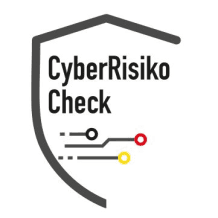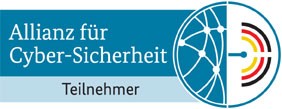What is Phishing?
Phishing is a form of cybercrime where fraudsters attempt to obtain sensitive information such as usernames, passwords, and credit card details through deceit. This usually happens by the attackers impersonating a trusted source.
The term "Phishing" is a play on the English word "Fishing," where bait is used to catch a fish. In the world of cybercrime, the tricks and deceptions represent the bait, while the unsuspecting victims are the catch.
Types of Phishing
Email Phishing
This is the most common form of phishing. Attackers send emails that appear to come from trusted companies or organizations. These emails often urge the recipient to click on a link or divulge personal information.
Spear Phishing
Spear phishing targets specific individuals or companies. Unlike general phishing attacks, attackers here use personalized information to gain the recipient's trust.
Vishing
Vishing stands for "Voice Phishing" and occurs over the phone. Fraudsters impersonate employees of a known organization and request sensitive information from the call recipients.
Smishing
Smishing is the use of SMS to launch phishing attacks. The recipient receives a message with a malicious link or is pressured to disclose personal information.
How Does Phishing Work?
Phishing attacks are usually carried out in several steps:
1. The attacker creates a fake message or webpage that looks like a legitimate source.
2. The message is sent to a large number of people, or in the case of spear phishing, to targeted individuals.
3. The recipient is lured into clicking a link or opening attachments that contain malware or lead to malicious websites.
4. Once the information is captured, the attackers use it for identity theft, to gain access to funds, or to carry out other criminal activities.
Protective Measures Against Phishing
Be Vigilant with Emails and Messages
Always check the email address of the sender and be suspicious of unexpected messages asking you to provide personal data.
Use Antivirus Software
A good antivirus scanner can help you detect and block phishing emails and dangerous attachments.
Carefully Check Links
Before you click on a link, check it by hovering over it to see the actual URL. Watch out for typos and illogical web addresses.
Regularly Update Your Software
Security updates for operating systems and applications can help close known vulnerabilities that phishing attacks exploit.
Get Trained
Companies should offer regular training for employees to raise awareness of phishing and other cyber threats.
Phishing in the Classroom: Real-World Examples
Phishing is a global threat that can occur in various scenarios. Here are some real examples where companies and individuals fell victim to phishing:
In 2013, over 110 million credit card details were stolen from a large retail company through a phishing attack. The hackers used a simple phishing email to gain access to the company’s IT systems.
Another well-known example is the spear-phishing attack of 2016, which targeted the presidential campaign. The attackers used targeted emails to gain access to sensitive information, ultimately leading to a significant political scandal.
Conclusion: Stay Vigilant!
Phishing is an omnipresent risk in today’s digital world. Attackers are becoming increasingly sophisticated, and it is up to individuals and organizations to remain vigilant and take appropriate protective measures. By understanding the methods and techniques of phishing, you can better protect yourself from these threats and keep your digital information secure.
Phishing in Germany: Current Developments
The significance of phishing in Germany is continuously growing. According to recent studies by the Federal Office for Information Security (BSI), German companies are increasingly affected by cyber threats. The Bitkom Association reports that 84% of German companies were victims of cyberattacks in the last two years.
Particularly in the area of phishing, the following trends are emerging:
Increasing investments in preventive security measures
Heightened awareness of holistic security concepts
Integration of phishing into existing compliance frameworks
EU Compliance and Phishing
With the introduction of the NIS2 Directive and tightened GDPR requirements, German companies must adjust their security strategies. Phishing plays a central role in meeting regulatory requirements.
Key compliance aspects:
Documentation of security measures
Regular review and updates
Proof of effectiveness to supervisory authorities
Practical Implementation in Daily Corporate Life
The integration of phishing into corporate daily life requires a structured approach. Experience shows that companies benefit from a gradual implementation that considers both technical and organizational aspects.
Think of phishing as insurance for your company: The better prepared you are, the lower the risk of damage from security incidents.
Additional Security Measures
For a comprehensive security strategy, you should combine phishing with other security measures:
Vulnerability Management - Systematic vulnerability management
Penetration Testing - Comprehensive security testing
Security Hardening - Employee awareness training
Incident Response Plan - Preparation for security incidents
Conclusion and Next Steps
Phishing is an essential building block of modern cybersecurity. Investing in professional phishing measures pays off in the long term through increased security and compliance.
Do you want to optimize your security strategy? Our experts are happy to advise you on implementing phishing and other security measures. Contact us for a non-binding initial consultation.
🔒 Act now: Have your current security status assessed by our experts
📞 Request Consultation: Schedule a free initial consultation on phishing
📋 Compliance Check: Review your current compliance situation
📌 Related Topics: Cybersecurity, IT Security, Compliance Management, Risk Assessment
Best Practices for Phishing
The successful implementation of phishing requires a systematic approach. Based on our extensive experience in cybersecurity consulting, the following best practices have proven effective:
Strategic Planning
A thoughtful strategy is the foundation for successful phishing. You should consider the following aspects:
Define clear objectives and success metrics
Involve stakeholders early and establish responsibilities
Calculate realistic timelines and budgets
Conduct risk assessment and contingency planning
Technical Implementation
The technical implementation of phishing should be gradual:
Analysis of Current Situation: Evaluate existing security measures
Gap Analysis: Identify areas for improvement
Pilot Project: Trial run in a limited area
Rollout: Gradual expansion across the entire company
Monitoring: Continuous monitoring and optimization
Common Challenges and Solutions
When implementing phishing, similar challenges regularly arise. Here are proven solutions:
Resistance to Change
Employees are often skeptical of new security measures. Successful change management strategies include:
Transparent communication about benefits and necessity
Training and continuing education measures
Involvement of opinion leaders as multipliers
Gradual introduction with quick wins
Budget Restrictions
Limited resources require a prioritized approach:
ROI calculation for various measures
Phased implementation based on priorities
Utilization of synergies with existing systems
Consideration of compliance requirements
Success Measurement and KPIs
The success of phishing measures should be measurable. Relevant metrics include:
Quantitative Metrics
Number of identified and resolved vulnerabilities
Reduction in the average response time to security incidents
Improvement in compliance ratings
ROI of implemented security measures
Qualitative Assessments
Employee satisfaction and acceptance
Feedback from customers and partners
Evaluation by external auditors
Reputation and trust in the market
Future Trends and Developments
The landscape of cybersecurity is continually evolving. Current trends that influence phishing include:
Artificial Intelligence: AI-driven threat detection and response
Zero Trust Architecture: Trust is not assumed but continuously verified
Cloud Security: Adaptation to hybrid and multi-cloud environments
IoT Security: Protection of connected devices and systems
Quantum Computing: Preparation for post-quantum cryptography methods
Companies that invest in phishing today position themselves well for future challenges and opportunities.
Your Next Step
The implementation of phishing is an investment in your company's future. Our experts support you in developing a tailored solution that meets your specific needs.
Start today:
📞 Free Consultation: Schedule a non-binding conversation
📋 Security Assessment: Have your current security status evaluated
🎯 Customized Solution: Development of an individual phishing strategy
🚀 Implementation: Professional execution with continuous support
Contact us today and take the first step towards a safer digital future.




